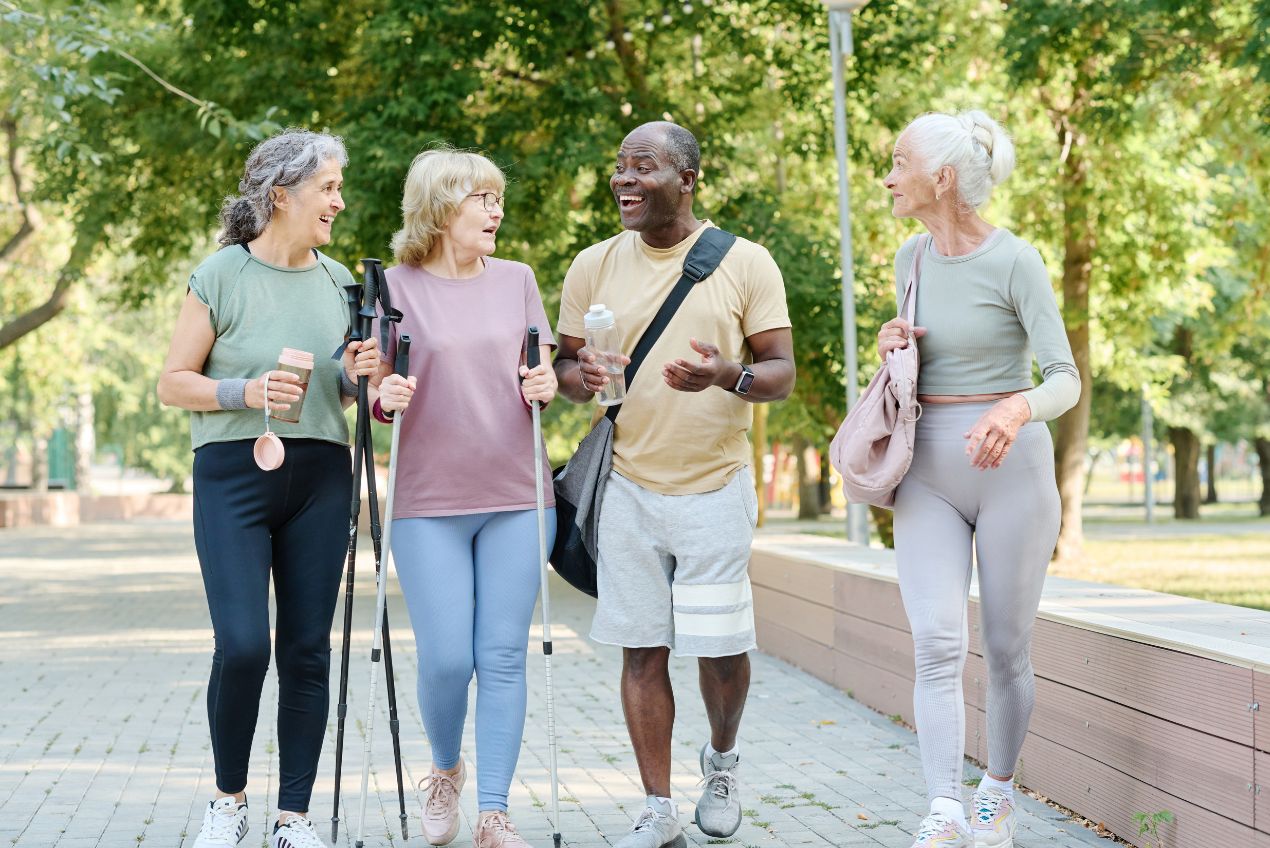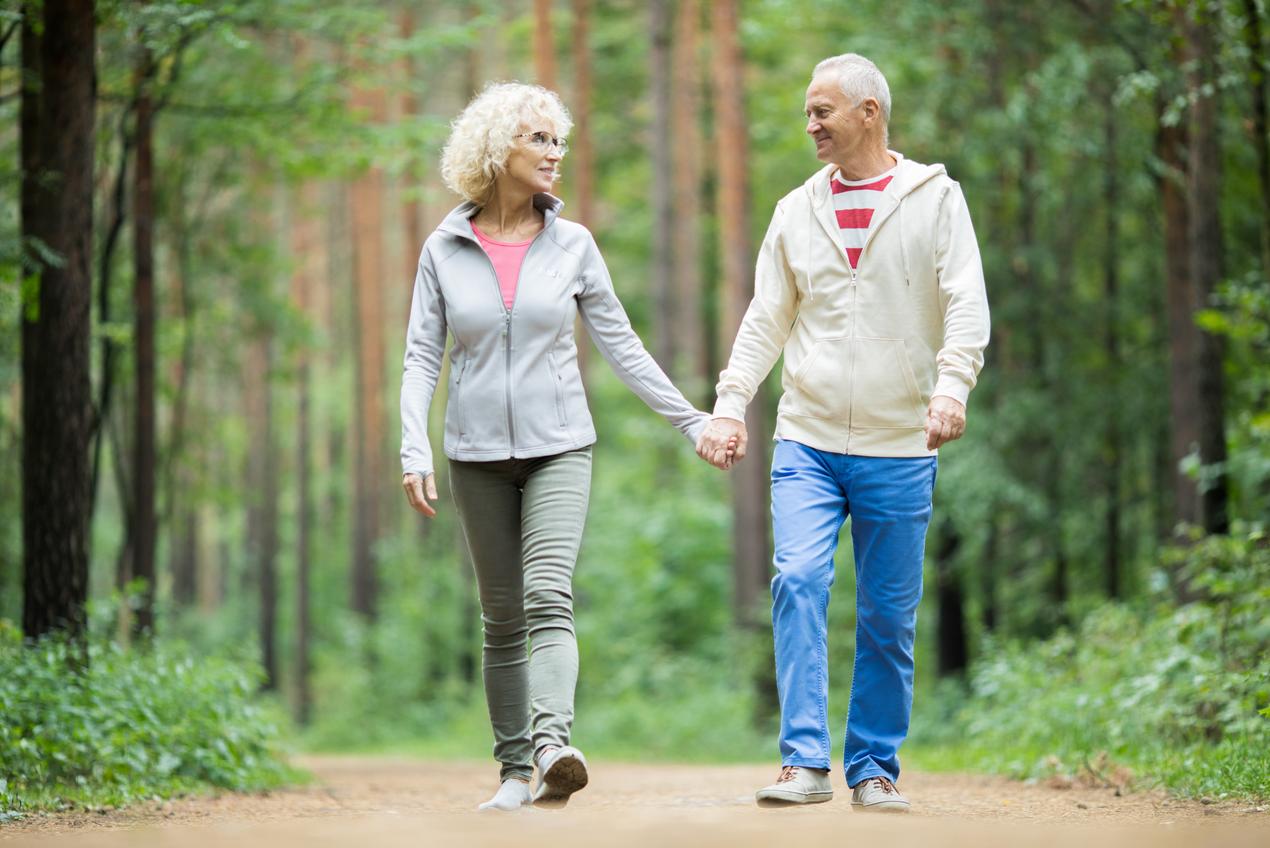Walking is one of the simplest, most accessible, and beneficial forms of exercise for seniors. It requires no special equipment, can be done almost anywhere, and can be adapted to everyone’s pace. Beyond its physical health benefits, walking also promotes mental and social well-being. Discover why walking should be part of your daily routine and how to integrate it into your lifestyle safely and enjoyably.
Why is Walking Important?
As we age, maintaining an active lifestyle becomes essential to preserve mobility, independence, and quality of life. Walking is a gentle activity that engages the whole body without causing strain. It helps to:
Keep muscles and joints moving
Stimulate blood circulation
Preserve bone density
Improve balance and reduce the risk of falls
Support mental and cognitive health
How Long Should You Walk?
The World Health Organization (WHO) recommends that seniors engage in at least 150 minutes of moderate-intensity physical activity per week. This is roughly equivalent to 30 minutes of walking a day, five days a week.
However, every step counts! If you’re just starting out, begin with 10- to 15- minute sessions and gradually increase the duration. It’s important to listen to your body and respect your limits.
Walking for Physical Health
Walking is more than just a way to get around, it’s a true health ally. For seniors, it plays a vital role in maintaining vitality and independence. By incorporating walking into your daily routine, you actively help preserve your physical fitness while reducing the risk of various age-related illnesses.
Improved Cardiovascular Health
Brisk or steady walking helps the heart work effectively but gently. It can help lower blood pressure, improve cholesterol levels, and reduce the risk of cardiovascular diseases, still among the leading causes of death in seniors.
Muscle Strengthening and Mobility Maintenance
Regular walking strengthens legs, back, and even abdominal muscles. This helps prevent age-related muscle loss, improves posture, and supports the ability to perform daily tasks such as climbing stairs or carrying groceries.
Walking also helps maintain joint flexibility, which can reduce stiffness and pain for people living with arthritis.
Osteoporosis Prevention
Walking is a low-impact exercise that stimulates bones and helps maintain their strength. By promoting bone density, it helps prevent or slow the progression of osteoporosis, thus reducing the risk of fractures.
Better Balance and Coordination
Walking on various surfaces (sidewalks, trails, treadmills) helps engage stabilizing muscles and the nervous system. This improves coordination and reduces the risk of falling, a major health concern for seniors.
Walking for the Mind: Psychological Benefits
Walking doesn’t just benefit the body; it also has a powerful impact on mood and cognitive abilities. For seniors, it becomes a valuable tool for preserving mental health, combating isolation, and boosting memory. Moving your body also activates your mind.
Reduced Stress and Anxiety
Taking a walk, especially in nature or a calm environment, has a soothing effect on the mind. Walking stimulates the release of endorphins, the feel-good hormones, and lowers levels of cortisol, the stress hormone.
Depression Prevention
Regular physical activity is well known for its positive effects on mood. For seniors who may face loneliness or grief, walking can help prevent depression.
Memory and Cognitive Function Boost
Studies have shown that regular walking can improve blood flow to the brain, thereby enhancing memory, attention, and concentration. It may also help slow the progression of neurodegenerative diseases such as Alzheimer’s.
Walking as a Social Tool

Walking with others, whether a loved one, friend, walking group, or even a pet, is a great way to maintain social connections. These shared moments help break isolation, encourage conversation, and reinforce a sense of belonging.
In some senior living residences, walking clubs are organized to promote regular activity and social interaction. Joining a walking club can be a great source of motivation.
Explore Senior Living Residences Offering Walking Clubs
6 Tips for Walking Safely
Walking is a simple and natural activity, but to reap all its benefits, it’s important to do it safely. Paying attention to safety helps prevent injuries, builds confidence, and allows you to fully enjoy each walk. Here are a few practical tips for walking with peace of mind, no matter your level or the season:
1. Wear Proper Footwear
Choose comfortable walking shoes with good support and non-slip soles.
2. Stay Hydrated
Even for a short walk, drink water before and after your activity. In summer, don’t forget your water bottle.
3. Choose a Safe Route
Opt for flat, well-lit paths away from traffic. Parks and residential neighbourhoods are often good options.
4. Dress for the Weather
Wear layered clothing, a hat or warm cap depending on the season, and make sure you’re visible if walking at night.
5. Use Mobility Aids if Needed
Walking poles, a cane, or a walker can offer more stability for those who need support. Don’t hesitate to speak with a healthcare professional to determine the right aid for you.
6. Warm up Gently
Start with light movement to activate your muscles, then walk at a slow pace before increasing intensity.
Move to Live Better, Even in a Senior Living Residence
Walking is an excellent way to maintain your health, stay active, and nourish your well-being every day. In senior living residences, walking clubs provide a wonderful opportunity to stay active in good company.
Would you like to live in a setting that encourages an active lifestyle? Contact Bonjour Résidences at 1 844 918-1020 or fill out an online request. Our team of senior housing specialists is here to guide you toward a senior living residence that fits your needs.








